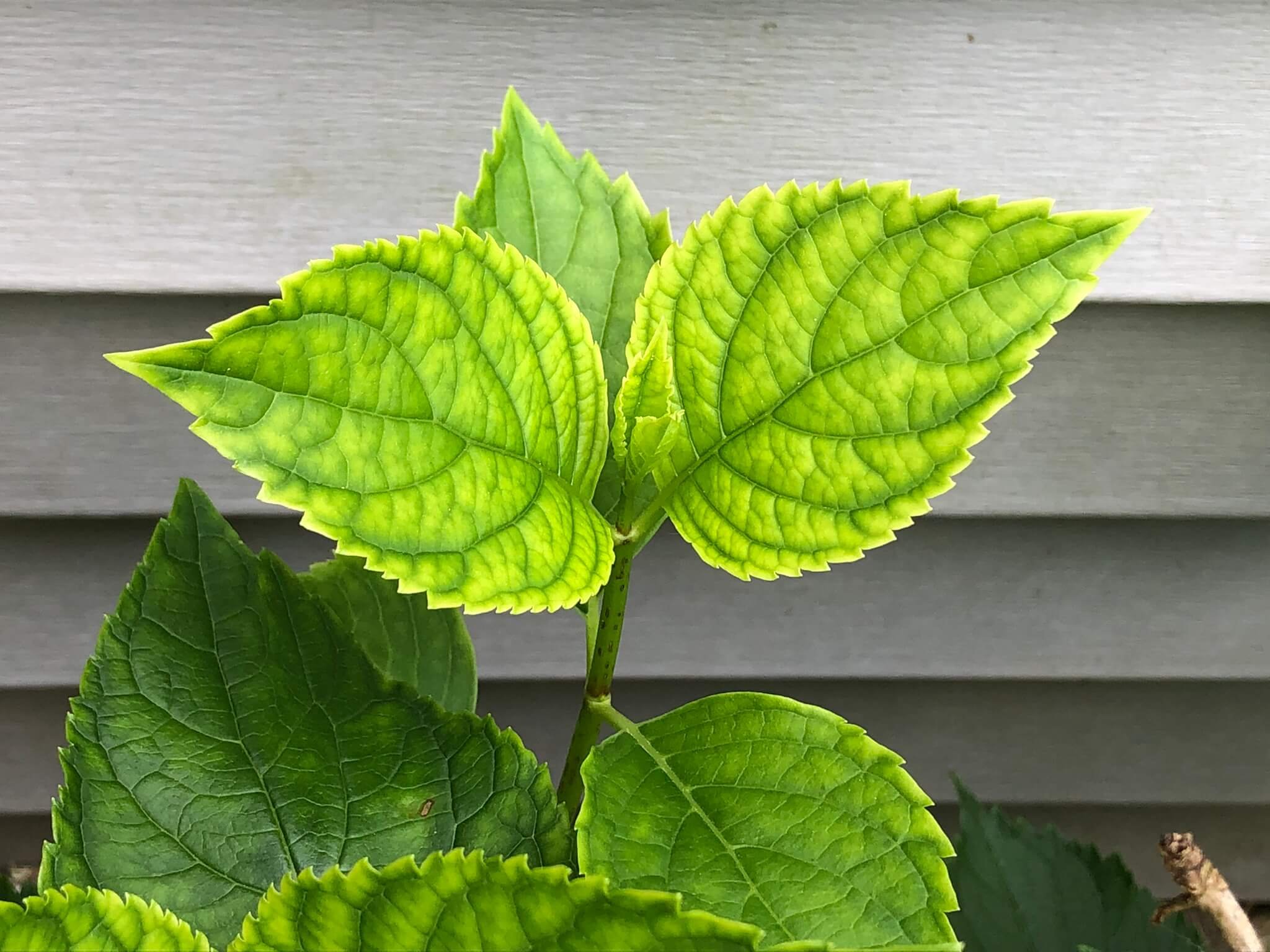Getting My Hydrangea Leaves Turning Yellow To Work
Wiki Article
The Best Strategy To Use For Hydrangea Leaves Turning Yellow
Table of ContentsHydrangea Leaves Turning Yellow Things To Know Before You Get ThisMore About Hydrangea Leaves Turning YellowThe Facts About Hydrangea Leaves Turning Yellow UncoveredHydrangea Leaves Turning Yellow Fundamentals ExplainedNot known Details About Hydrangea Leaves Turning Yellow
Overwatering can also create dehydration, as counterintuitive and strange as that might sound. Overwatering can choke off oxygen to the origins, which your houseplant requires to endure.Thus the plant ends up being dehydrated despite the fact that it is being in a wealth of water. Rotting roots will transform slick and black with a mushy structure and a decaying smell. The fallen leaves of your hydrangea could diminish, and the ones that are still affixed will be yellowed or brownish and be mushy at the stem.

Without your intervention, those leaves will swiftly transform brown, then black as they melt. Where you put your hydrangea matters a whole lot if you desire your plants to keep its complete deepness of color and have appealingly green fallen leaves. SIf your hydrangea is an interior plant in your house after that you will likely have an alternative of four home window instructions: north, south, eastern, and west.
Hydrangea Leaves Turning Yellow for Beginners
Hydrangea getting great light, Straight sunshine for hydrangeas is appropriate in the early morning. When the afternoon sunlight strengthens, the direct light is also scorching, so offer indirect light to partial color. Spotted shade is an additional alternative. Permit me to explain a few of these "light" terms. Direct light is the kind of light a plant gets when it sits directly in the sunlight.Spotted color means your hydrangeas have above cover, such as a bigger tree or plant. The sun comes via straight, but the cover of the bigger plant allows the sunshine in only periodically via the openings in the branches or leaves. Hydrangeas can grow in direct sunlight as long as they are well watered a sprinkled frequently.
Photosynthesis, as we all understand, is important for plant survival, so chlorosis demands to be dealt with promptly. Hydrangea Leaves Turning Yellow. While chlorosis can be caused by other nutrient deficiencies, it is most generally an iron deficiency. In the following area you will find out exactly how to recognise whether your plant has an iron shortage or another thing
Initially appears on the older fallen leaves, but the fallen leave veins stay environment-friendly. While there is typically enough iron in all-natural soil, hydrangeas frequently battle to take in sufficient of it.
Hydrangea Leaves Turning Yellow for Beginners
The very best way to avoid iron deficiency-chlorosis in hydrangeas is to grow them in suitable ericaceous or acidic dirt. When planting in a bed, mix in some peat or reduced-peat ericaceous garden compost and examine the p, H value annually. This is required due to the fact that the garden compost mix around the plants will affect the p, H value of the dirt in the future and the p, H worth might rise once more.It is only used on a business range, where a prolonged iron shortage would imply considerable yield losses. The special fertilizers click for this are frequently pricey and require to be applied in very accurate dosages to stay clear of damage to the leaves. Foliar fertilisation is just effective for a short period and should be used regularly or supplemented by normal iron fertilisation.
Input your search key phrases and press Enter.
We're ideal in the middle of our late-blooming hydrangea season here, so I believed I would certainly share a pointer for this certain kind of hydrangea that I located really fascinating. A great deal of people have a comparable concern with their panicle hydrangeas where they begin to see the leaves transforming yellow and handing over at different components of the season and it can be quite dramatic and pretty worrying since it can take place actually rapidly on a hedge that appears like it's otherwise really healthy.
The Ultimate Guide To Hydrangea Leaves Turning Yellow
I've shared it on Instagram before, yet I understood I have actually never told you concerning this in a genuine, full post, so today I'm taking treatment of that. When I claim that this uses to panicle hydrangeas, that indicates the kind of hydrangeas that typically bloom later in summer, generally around August.
If you truly intend to make the most of blossoms, a (the center number) will truly help raise the number and size of your blossoms. You must see the variety of newly-yellowed fallen leaves lower pretty rapidly as quickly as you provide your hydrangea the food this hyperlink it requires. The excellent news is that if you do definitely nothing, the plant will still be fine, it will certainly just have a few much less fallen leaves.
Courtenay is the writer of view publisher site guide The Cleaning Ninja and has been featured in countless magazines including Nation Sampler Farmhouse Design, Better Homes and Gardens, Parents Publication, Real Simple, and Our Houses.
3 Simple Techniques For Hydrangea Leaves Turning Yellow
The spots develop due to water declines from rain or watering that rest on leaves throughout warm and damp conditions. This is specifically real in large plant baby rooms and residential or business landscapes that utilize overhead irrigation frequently. When utilizing above watering it is best to water in very early to mid morning so the sun can dry out the water from vegetation.Report this wiki page